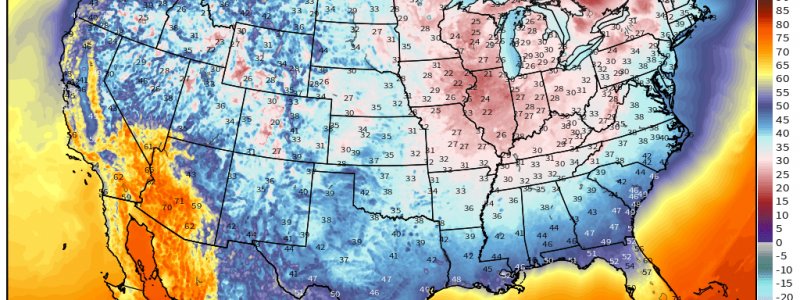
Frigid in the east now, but what’s next?
Good Monday morning to you all!
It’s beginning to feel a lot like… well, winter in most of the United States this morning.
A glance at our current temperatures will tell you that pretty much everyone (sorry Florida and the desert southwest) is seeing morning lows in the 40s, 30s, and even 20s. Thanks to a relatively deep trough currently over the Midwest and Northeast, cold air from Canada is funneling down into the states.
The thermal contrast between the Midwest and Eastern coastline are also kicking up wind gusts of up to 50 mph in places across the eastern edge of the Appalachians. Winds, of course, bring wind chill factors so the “feels like” temperature in a few of the aforementioned places is a brisk 10 degrees F or so. Like I said, it feels a lot like winter out there today. I’m tempted to break out the Christmas tree.
But, as it is still early in the season, this pattern won’t last. There’s a change coming later in the week that will make it feel more like, dare I say, Indian Summer. But before we get to that, what, exactly, is Indian Summer?
You’ve no doubt heard the term used at least once before in reference to a warm period during the fall. Wikipedia defines it as “a period of unseasonably warm, dry weather that sometimes occurs in autumn in temperate regions of the northern hemisphere during September to November.” William R. Deedler (weather historian) defines it as “any spell of warm quiet, hazy weather that may occur in October or November.” Most agree, however, that the warm weather must occur after the first “killing” frost – such as the one we are experiencing this morning – to be considered true Indian Summer. The origin of the term is largely unknown except that it was first noted in the regions inhabited by Native Americans and it was they who relayed the phenomenon to the European settlers.
It is not just a North American event, though. Warm periods in the fall in Germany/Austria/Switzerland are referred to as “Altweibersommer” meaning “old women’s summer.” In parts of South America with similar climates to North America, their autumnal warm periods are known as “Veranico” which translates to “little summer.” So the take-away here: It is common in temperate climates to experience at least one period of warm, dry weather deep into the autumn months.
So, back to our own Indian Summer:
The trough causing the winterish temperatures this morning will exit to the east by early Wednesday. A strong ridge will build in behind it over the entirety of the continental US bringing much warmer weather. Most places, with the exception of the higher elevations and northern extremities, will be warming back into the 60s and 70s by Thursday afternoon. The weather will remain quiet over much of the continental US through Friday as well so make plans to go soak up that sun!
Elsewhere in the world, we have a hurricane on the prowl.
Tropical Storm Eta has now officially strengthened to Hurricane Eta and, per the NHC 4 am EST advisory, is packing maximum sustained winds of 75 mph and moving west at 12 mph. It will slowly approach Central America over the next 2 days with landfall currently expected in Nicaragua sometime Tuesday. Dangerous winds, storm surge are expected along with heavy rainfall that could lead to catastrophic flooding. Regardless of category at landfall, Eta is a slow mover and is expected to dump upwards of 15 inches of rain in certain areas.
Be on the look out for Jacob’s blog post later today which will feature an in depth analysis of Hurricane Eta as it approaches the Central American coast!
Have a fantastic day and may your coffee be stronger than your Monday!
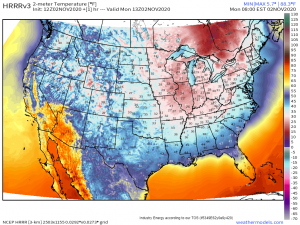
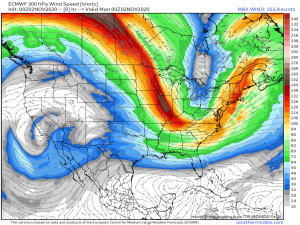
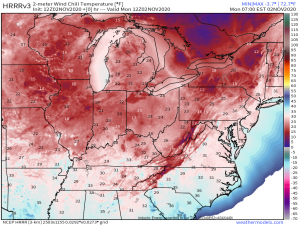
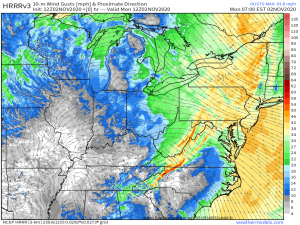
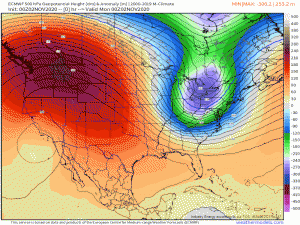
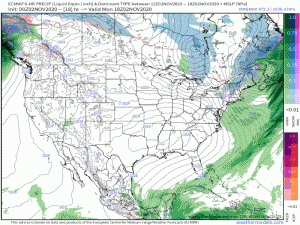
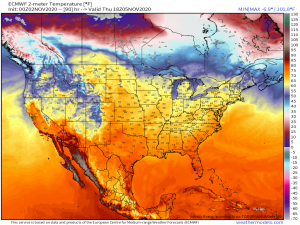
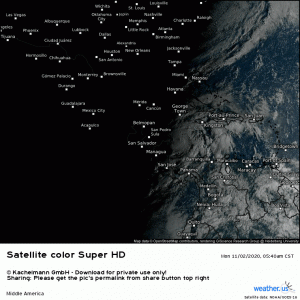
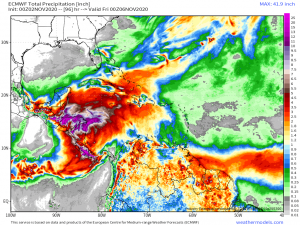












Excellent! What a blessing you will be.
Meghan thank you. Great forecast. Indian Summer on the way, enjoyed the explanation. Send some cooler weather to my grandson in AZ.
Will follow your blog. Very informative.
Thank you Meghan for your very indepth weather report in very easy to understand language. I love the insight on Indian Summer.
We have some wicked wind here in Northeast Pa. this morning and yes it is cold.
Keep up the wonderful work.